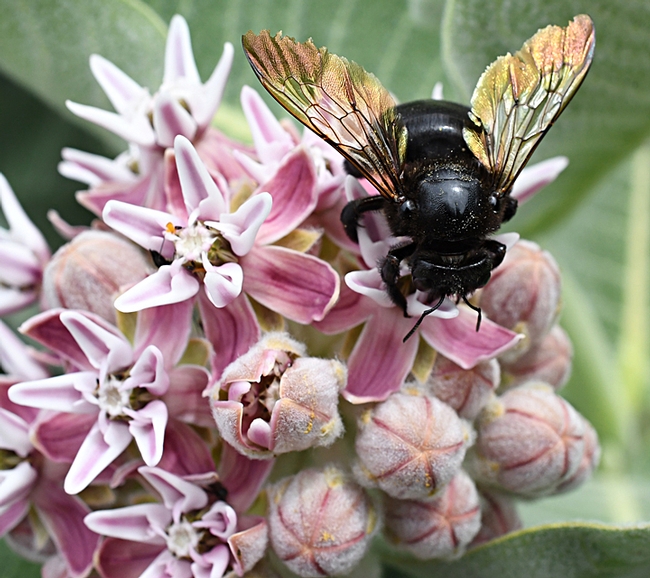There's an old saying applicable to child-rearing: "First you give them roots, and then you give them wings."
Roots. Wings.
Roots to ground them, to love them unconditionally. And wings for them to lift off and launch new beginnings.
Quote Investigator attributes the origin to newspaper editor Hodding Carter's book, "Where Main Street Meets the River," published in 1953. Carter credited a "wise woman" with saying that:
"A wise woman once said to me that there are only two lasting bequests we can hope to give our children. One of these she said is roots, the other, wings. And they can only be grown, these roots and these wings, in the home..."
Wings.
But have you ever walked through a pollinator garden and been awestuck by the beauty of wings? The iridescence wings of a female Valley carpenter bee, Xylocopa varipuncta?
It was Sunday, May 21 and the feeding frenzy on our showy milkweed, Asclepias speciosa, was in full swing: it was a pushing, shoving and sipping match for the honey bees, carpenter bees, sweat bees, lady beetles, and syrphid flies.
But it was the wings--and wing venation--of a carpenter bee sparkling in the sunlight that caught our attention.
The wing venation "clearly shows a couple of characteristic features of Xylocopa wing venation: the long slender marginal cell and the 'boot-shaped'" second submarginal ('toe' pointing toward head end)," noted native pollinator specialist Robbin Thorp, distinguished emeritus professor of entomology at the University of California, Davis, and co-author of California Bees and Blooms: A Guide for Gardeners and Naturalists.
Lynn Kimsey, director of the Bohart Museum of Entomology and professor of entomology, UC Davis Department of Entomology and Nematology, also weighed in. "They are lovely. Not too many wasps or bees wings have this iridescence. That's an old lady by the way. Look how worn her wings are."
The LOL loved the showy milkweed. But she's the one that put on the show.
Attached Images:
